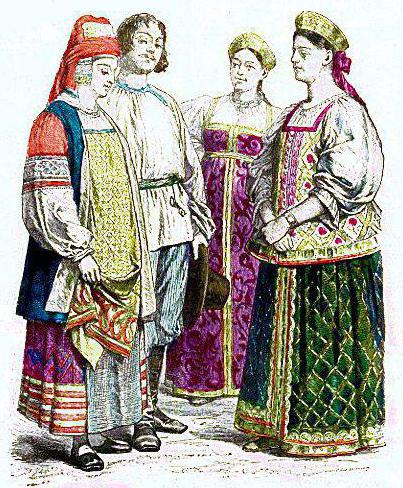The principles of Russian spelling are considered very complex, but against the background of comparison with other European languages, where there are a lot of traditional, conditional spellings, the spelling of the Russian language as a whole is quite logical, you just need to understand what it is based on.
This article talks about the morphological principle of Russian spelling, examples of which are most of the words in our language.
What is morphology
Understanding what the morphological principle of Russian spelling is, examples of which are already given in the first grade of elementary school, it is impossible without a concept of morphology as such. What is morphology? In what areas of knowledge is it customary to talk about it?
The application of the concept of morphology is much broader than the linguistic field, that is, the field of language learning. The easiest way to explain what it is, for example, biology, where, in fact, the term came from. Morphology studies the structure of the organism, its components and the role of each part in the life of the organism as a whole. For example, human internal morphology is anatomy.
Thus, morphology in the linguistic sense of the word studies the anatomy of the word, its structure, that is, what parts it consists of, why these parts can be distinguished and why they exist. "Components" of a person are the heart, liver, lungs; flower - petals, pistil, stamens; and the words are prefix, root, suffix and ending. These are the "organs" of the word that are in complex interaction with each other and perform their functions. The theme “Morphemic and word formation” at school is aimed specifically at the study of these components of the word, the laws of their combination.
Preliminarily answering the question about the main principle of our spelling, we can say that we write down the components of the word (morpheme) as elements of the letter, this is the morphological principle of Russian spelling. Examples (for starters, the simplest): in the word "balls" we write I, as we write down, transfer the root of the "ball" without changes, as we hear it in the word "ball".
Are there other spelling principles?
To understand what the essence of the morphological principle of Russian spelling is, it must be considered against the background of other principles.
Let’s clarify what spelling, or spelling, is. These are the rules that govern the writing of a particular language. Far from always the basic principle that underlies these rules is morphological. In addition to him, first of all, we need to talk about phonetic and traditional principles.
Sound Recording
For example, you can record a word as it is heard, that is, record sounds. In this case, the word "oak" we would write: "dup". This principle of recording words (when nothing is important but the sound of the word and the transmission of this sound) is called phonetic. He is followed by children who have just learned to write: they write down what they hear and pronounce. In this case, the uniformity of any prefix, root, suffix or ending may be violated.
Phonetic principle in Russian
There are not many examples of phonetic spelling. It affects, first of all, the rules for writing a prefix (without (without)). In those cases when we hear the sound C at its end (in front of deaf consonants), we record this particular sound (nonchalant, uncompromising, unscrupulous ), and in those cases when we hear 3 (in front of voiced consonants and sonorous), we record it ( meek, carefree, loafer).
Traditional principle
Another important principle is traditional, it is also called historical. It lies in the fact that a certain spelling of a word can be explained only by tradition or habit. Once upon a time, a word was pronounced, and therefore, was written in a certain way. Time passed, the language changed, its sound changed, however, by tradition, the word still continues to be written that way. In Russian, this, for example, concerns the spelling of the well-known "women" and "shea." Once in Russian these combinations were pronounced precisely “softly”, then this pronunciation was gone, but the writing tradition has been preserved. Another example of traditional spelling is the loss of the connection of a word with its "test" words. This will be discussed below.
Cons of the traditional way of writing words
In the Russian language, there are quite a lot of such "evidence" of the past, but if you compare, for example, with the English language, it will not seem to be the main thing. In English, most of the spellings are explained precisely by tradition, since no reforms have been carried out in it for an extremely long time. That is why English-speaking students are forced not only to understand the rules of spelling words, but to memorize the spelling themselves. Only tradition, for example, can explain why in the word "high" only the first two letters are "voiced", and the next two are written simply "out of habit", denoting zero sounds in the word.
Widespread traditional principle in Russian
As mentioned above, the spelling of the Russian language follows not only a morphological principle, but also a phonetic and traditional one, which is quite difficult to get away completely. Most often we are faced with the traditional, or historical principle of Russian spelling, when we write down the so-called dictionary words. These are words that can only be spelled out historically. For example, why do we write "ink" through E? Or "underwear" through E? The fact is that historically these words are associated with the names of the colors - black and white, since at first the ink was only black, and the linen was only white. Then the connection of these words with those from which they were formed was lost, but we continue to write them that way. There are also words whose origin is impossible to explain with the help of modern words, but their spelling is strictly regulated. For example: a cow, a dog. The same applies to foreign words: their spelling is governed by the words of another language. These and similar words just need to be learned.

Another example is the writing of qi / tsu. Only by convention can one explain why I is written in the roots of words after C (with the exception of some surnames, for example, Antsyfer, and the words tsyts, chicks, chicken, gypsies), and in the endings - Y. After all, syllables are pronounced in both cases in exactly the same way and are subject to no verification.
There is no obvious logic when writing words with traditional spelling, and, you must admit, they are much harder to learn than "verifiable" words. After all, it is always easier to remember that which has an obvious explanation.
Why exactly the morphological principle?
The role of the morphological principle in spelling is difficult to overestimate, because it regulates the laws of writing, makes it predictable, eliminates the memorization of an infinite number of words in traditional writing and the “unraveling” of spelling in phonetic writing. Indeed, in the final analysis, the correct spelling of words is not a simple whim of linguists. This is what provides an easy understanding of the text, the ability to read any word "from the sheet." The children's spelling »» »» »» »» »» » » "makes reading the text difficult and slow. If you imagine that each time the words will be written in different ways, the reader, his speed of reading the text and the quality of his perception will suffer, because all efforts will be directed towards the “decoding” of the words.

Perhaps for a language that is less rich in forms of words (that is, less rich in morphemes) and has less word-formation abilities (the formation of words in Russian is very easy and free, according to very different models and using a variety of ways), this principle would be suitable but not for Russian. If we add to this a rich cultural discourse, that is, the complexity and subtlety of the thoughts that our language is designed to express, then a primitive phonetic record is completely unacceptable.
The essence of the morphological principle of the Russian language. Examples
So, having examined the background of the morphological principle and finding out what morphology is, let us return to its essence. She is very simple. When we record a word, as the recording elements, we choose not sounds and not words, but parts of words, its component elements (prefixes, roots, suffixes, postfixes and inflections). That is, writing down a word, we build it, as from cubes, not from the sounds of speech, but from more complex, meaningful formations - morphemes. And “transfer”, write down each part of the word must be unchanged. In the word "gymnastic" after H, we write A, as in the word "gymnast", as we write down the whole morpheme - the root "gymnast". In the word “clouds”, the first letter we write O, in the form of a “cloud”, as we “transfer” the whole morpheme - the root of the “clouds”. It cannot be destroyed, modified, because the morphological principle says: write down the whole morpheme, regardless of how it is heard and pronounced. In the word “cloud”, in turn, we write the final in the ending, as in the word “window” (this is the end of a middle noun in the nominative case of the singular).

The problem of following the morphological principle in Russian writing
In Russian, the problem of recording according to the morphological principle is that we constantly fall into the traps of our pronunciation. Everything would be simple if all morphemes always sounded the same. However, in speech everything happens in a completely different way, which is why children, following the phonetic principle, make such a large number of mistakes.
The fact is that sounds in Russian speech are pronounced differently, depending on their position in the word.
Search for a pattern of morphemes
For example, at the end of words, we never utter a voiced consonant - he is always stunned. Such is the articulation law of the Russian language. It’s hard to imagine, but this is not the case in all languages. The English, by contrast, are always surprised when the Russians try to apply this law and utter a deaf consonant at the end of, say, the English word "dog". In the "stunned" form - "dock" - the word is not recognized by them at all.
To find out what letter should be written at the end of the word “steamboat”, we must pronounce the morpheme “move” so as not to put it in a weak position of the absolute end of the word: “walk”. From this example of the use of the morpheme, it can be seen that its standard ends in D.
Another example is vowels. Without stress, we pronounce them “blurred”, clearly they sound only under stress. When choosing a letter, we also follow the morphological principle of Russian spelling. Examples: to spell the word “walk,” we must “check” the unstressed vowel - “passage”. In this word, a vowel sounds clearly, standardly, which means that we record it in a "weak" position - without stress. All this is a spelling submission to the morphological principle of Russian spelling.
We also restore other standards of morphemes, not only root, but also others (for example, the prefix "ON" we always write and never does otherwise). And it is precisely the reference morpheme, according to the morphological principle of Russian spelling, that we record as an element when we write the word.
Thus, the morphological principle of Russian spelling presupposes knowledge of the structure of the word, its formation, part-line membership, grammatical features (otherwise it will be impossible to restore the standards of suffixes and endings). For a free and competent letter in Russian, you must have a rich vocabulary - then the search for "standards" of morphemes will be quick and automatic. People who read a lot write correctly, since free orientation in the language makes it easy to recognize the connections between words and their forms. It is during the reading that the understanding of the morphological principle of Russian spelling develops.